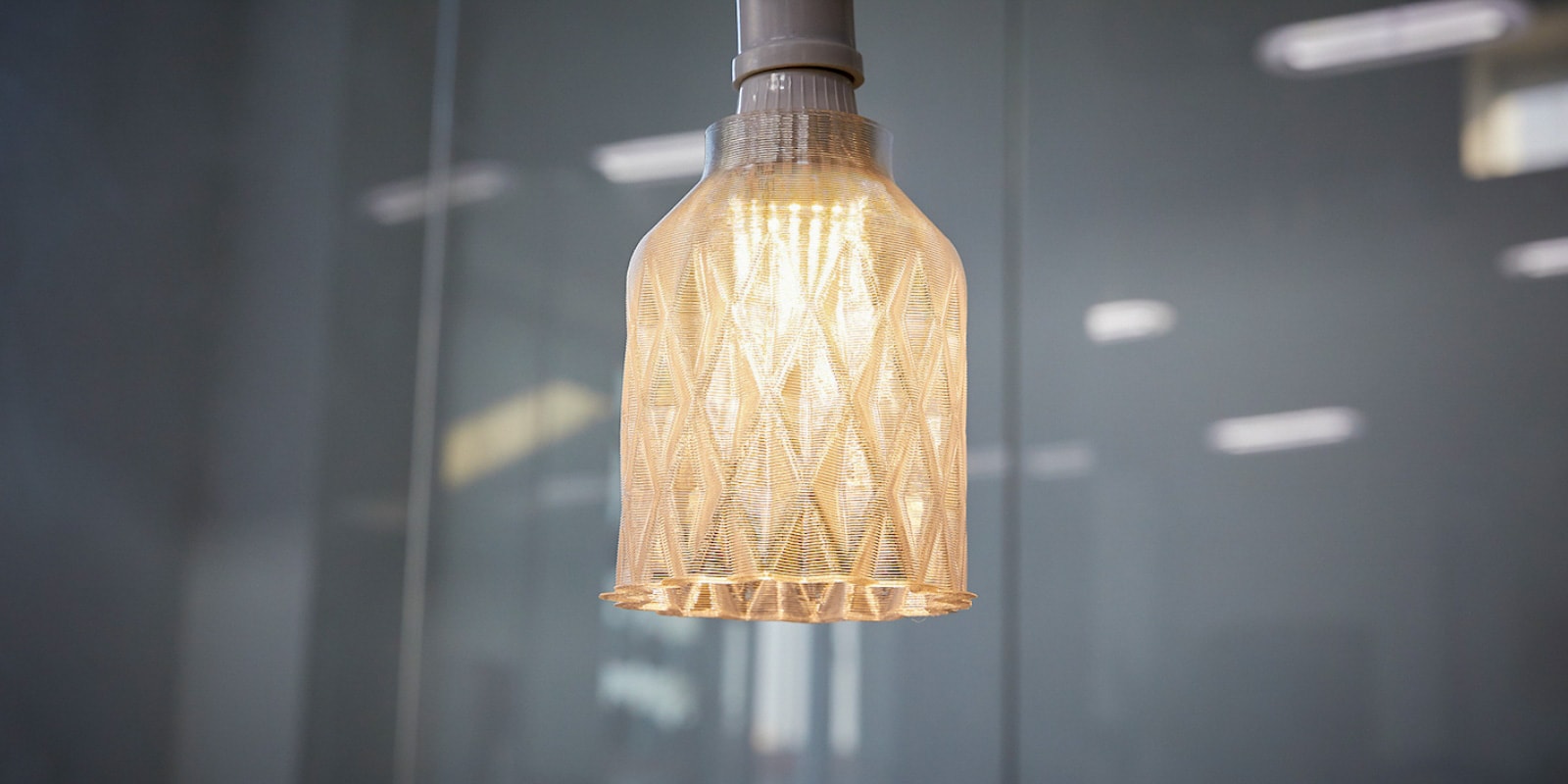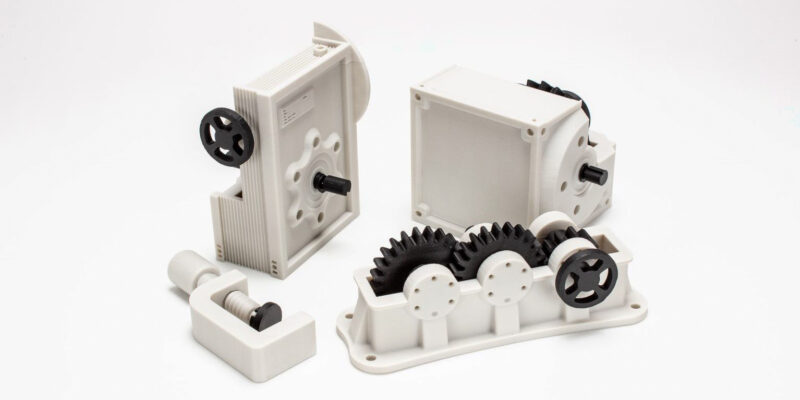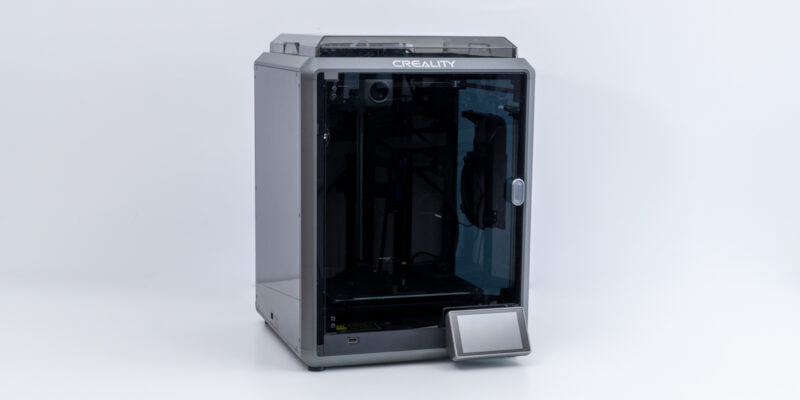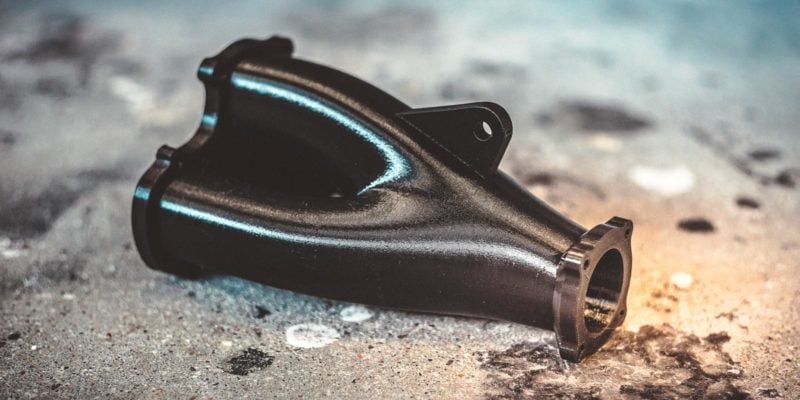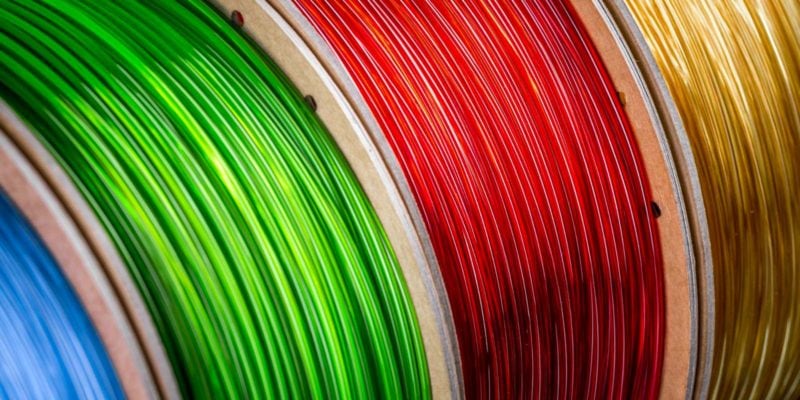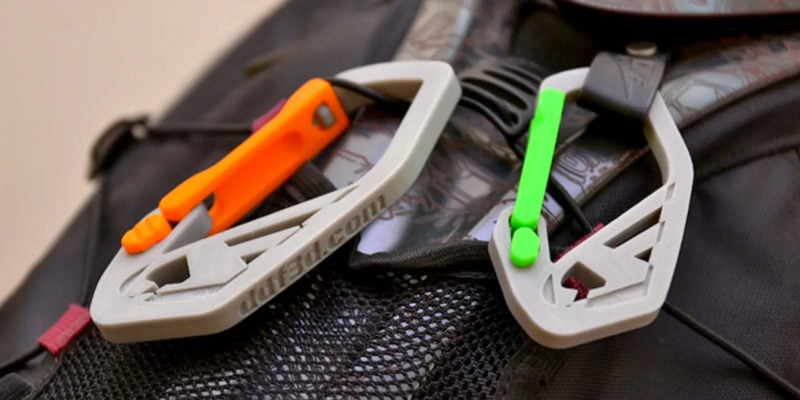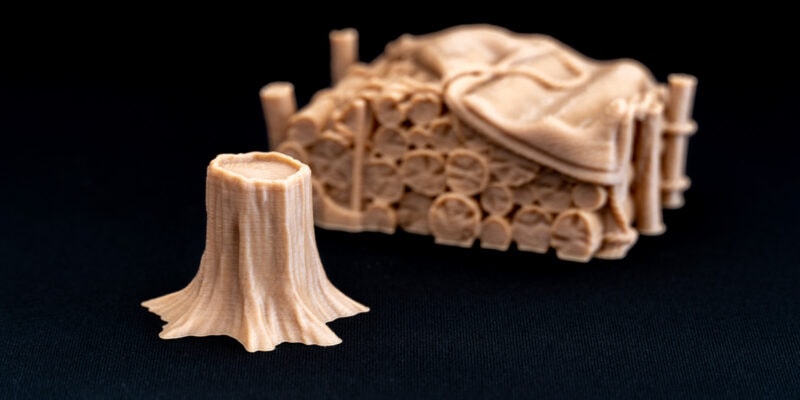First invented for creating astronauts’ visors, Polycarbonate has quickly caught on to become one of the most versatile plastic materials in use today. It’s UV-resistant, has a high-temperature tolerance, and is widely used in industrial as well as day-to-day applications.
Its versatility and tough mechanical characteristics have also helped it become an excellent 3D printing material. You can find several variants of Polycarbonate filament, some even mixed with carbon fiber strands, to further increase the strength of this material.
In this article, we’ll take a deep dive into learning more about printing with Polycarbonate PC filament. It’ll help beginners understand more about this material, and for more experienced users provide a deeper insight into its 3D printing capabilities.
Let’s start our journey into polycarbonate filament!
What Is Polycarbonate Filament in 3D Printing?
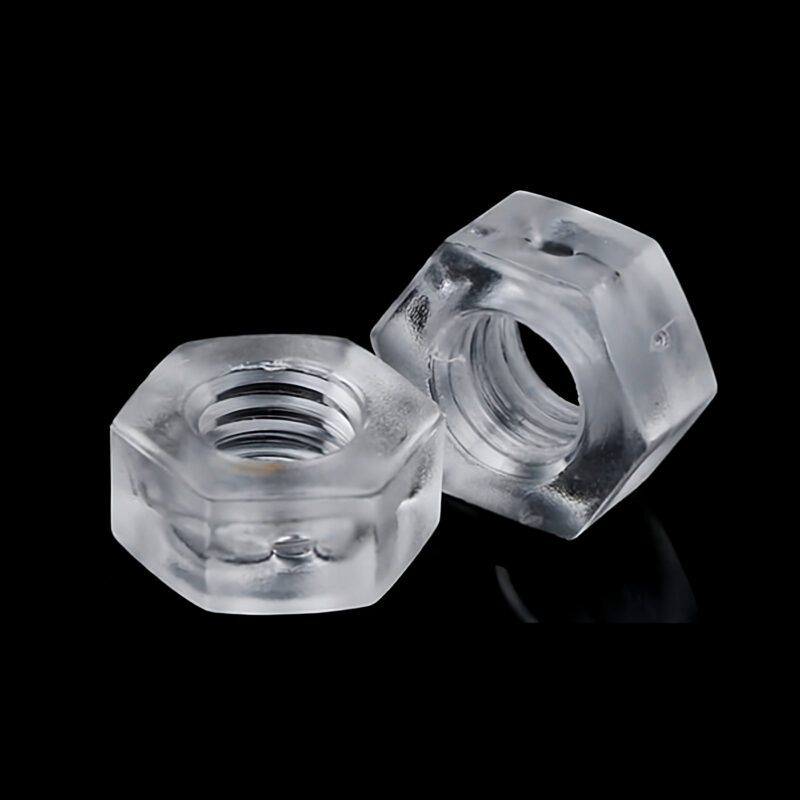
Polycarbonate (PC) filament is a tough-grade 3D printing material with relatively high impact resistance and the ability to withstand hot temperatures. Its high transition temperature is around 150 °C, which is significantly higher than the 60 °C temperature of PLA filament.
Furthermore, it has a transparent appearance, similar to undyed PETG filament, and combines very well with other 3D printing materials. For example, you can find PC-ABS and PC-Carbon fiber filaments, which combine some of the best properties of both materials. There’s even
Likewise, there’s no shortage of colors for Polycarbonate filament. Being naturally transparent, it is easier for manufacturers to create unique color blends, offering you better aesthetics along with good strength characteristics.
Another unique thing about Polycarbonate is that it’s highly malleable, even after cooling. You can bend or flex it, and it will not show any significant cracks on the part’s surface.
This property is useful in engineering and load-bearing applications. A part printed with Polycarbonate PC filament will not suddenly fail but gradually deform under heavy loads.
What Is PC Filament Used For?
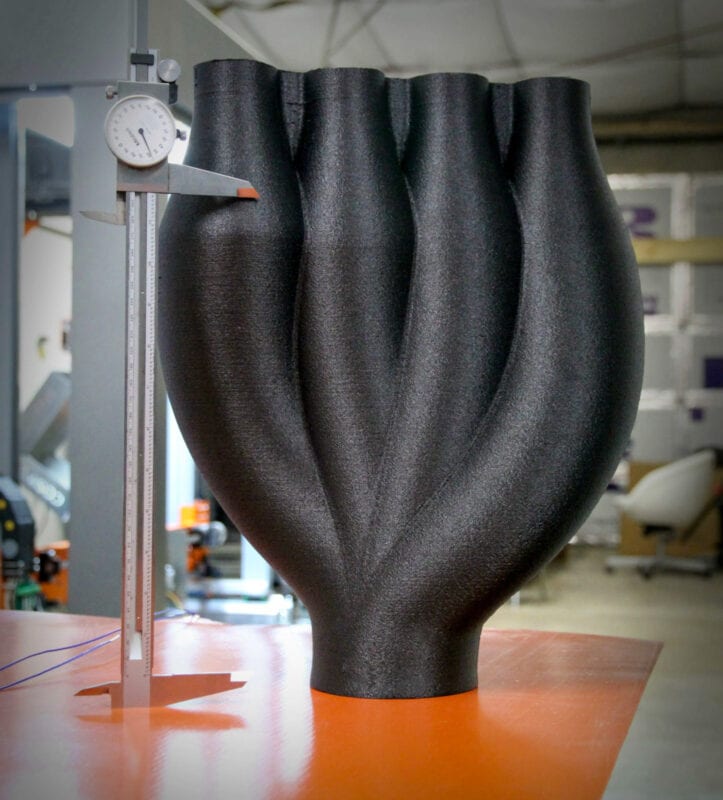
Due to its excellent strength and temperature resistance, Polycarbonate is used in protective equipment, fixtures, and as enclosures for phone and computer cases. It’s an omnipresent material used in every industry, from automobiles to toys.
Polycarbonate 3D printing is primarily used for engineering and high-load purposes. For instance, to demonstrate its material’s capabilities, Polymaker 3D printed a crane hook that lifted almost 850 Kg of load before failure.
Similarly, it demonstrated the abilities of its PC-Max filament by lifting an entire car using a 3D-printed car jack.
Other uses for PC filament are 3D-printed carabiners, electronic equipment cases, and heat-resistant parts. Its transparent nature comes in handy for printing clear parts such as headlight covers.
Considering its properties and multiple use cases, PC filament is an efficient 3D printing material that you can use in many applications.
Advantages and Disadvantages
Advantages
Excellent Impact and Yield strength
Polycarbonate PC filament has one of the best mechanical characteristics across various 3D printing materials. As proven by a 2020 study, 3D-printed PC parts have an impact strength between 6 and 32 kJ/m with a Yield Strength of about 61 MPa. In comparison, 3D-printed PLA parts have a Yield Strength of around 26 MPa.
The Yield Strength parameter indicates the load you can exert on your part before its shape deforms permanently. Similarly, the Impact strength of your 3D printed part tells you how much energy your print can absorb without deforming. For example, in case of a sudden impact on your part.
Both these parameters are highly influential in determining the durability and strength of your PC-printed parts.
For example, knowing the Yield Strength of your PC filament comes in handy to determine the load-carrying capacity of a 3D printed part; as is demonstrated in the crane hook video above.
High-Temperature Resistance

Polycarbonate parts are temperature resistant up to 150 °C before starting to fail. Even then, the filament isn’t melting but softens due to the temperature; the melting point is around 250 °C.
This temperature is significantly higher than most other 3D printing filaments and results in better utility for high-temperature applications.
Transparent Appearance
Polycarbonate is one of the few 3D printing filaments that you can get in clear color. It has a transparent appearance similar to PETG material. The strength of PC filament combined with its clear finish, makes it a useful material for printing protective enclosures, spectacles, face masks, shields, and even cases for various objects.
Disadvantages
Extremely Hygroscopic
Polycarbonate filament is highly hygroscopic and quickly absorbs moisture from its surroundings. It results in poor printability, rough surface finish, and bubbling on the part’s surface. The part strength is affected due to weak layer adhesion, which is a consequence of wet filament.
To maintain the quality of your Polycarbonate filament, you will have to invest in a good-quality filament storage solution and/or a dry box. These accessories add to your costs and increase the overall costs of printing with PC filament.
High Printing Temperature
Polycarbonate filament melts around 260 – 310 °C, and you need a heated bed that can reach 110-130 °C. These print temperatures are considerably higher than most 3D printing plastics and out of scope for most hobbyist-level 3D printers.
The high temperatures limit the material to more high-end and professional 3D printers, like Ultimaker and Raise 3D Pro 3D printers, which are too expensive for average users.
Moreover, printing with Polycarbonate at high temperatures can still be challenging. It’s useful to have experience printing with different filaments before you dive into 3D printing Polycarbonate material. Knowing how to optimize bed adhesion and mitigate warping is key.
Warps Easily
During the printing process, Polycarbonate filament is highly susceptible to temperature changes and reacts quickly to sudden air drafts. Because of this, it’s essential to use an enclosed 3D printer or 3D printer enclosure when 3D printing Polycarbonate plastic.
Slower print speeds also help to reduce the temperature difference in your parts and reduce the chances of warping. Whichever methods you use, pure Polycarbonate filament will be tougher to 3D print than Polycarbonate blends and other 3D printing materials.
Recommended Polycarbonate Print Settings
The table below has the recommended print settings for Polycarbonate 3D printing. While these are not set in stone, they are a good starting point for the PC printing process. When in doubt, it’s always a good idea to check your filament manufacturer’s recommendations.
| Parameter | Value |
|---|---|
| Printing Temperature | 260 – 310 °C |
| Heated Bed Temperature | 80 – 120 °C |
| Bed Adhesion | PEI, Commercial adhesive, Glue stick |
| Nozzle | Hardened Steel |
Aside from optimal Polycarbonate print settings, it’s also important to adequately dry your PC filament. Because it is highly hygroscopic, it will quickly absorb moisture from the air. Especially if you live in a high-humidity area.
Our general recommendation is to dry Polycarbonate filament at 70-75 °C for 6 hours before printing with it. It’s a good starting point for other brands of PC filaments that you use.
Using dry PC filament will help improve your print quality and layer adhesion and create a stronger part that exhibits the true strength characteristics of Polycarbonate filament.
Recommended 3D Printer Hardware for PC Filament
Aside from using a 3D printer with a high-temperature heated bed and an all-metal hot end, an actively heated print chamber also helps reduce the warping and layer splitting of Polycarbonate 3D printed parts. QIDI has some of the most affordable machines with this functionality.
As for the heated bed surface, Polycarbonate filament sticks firmly to glass with glue stick applied to it. BuildTak build plates work well too, but we have found it can stick a little too well and create print removal issues.
A flexible PEI printing surface might be your best, all-rounded option for printing PC filament. It offers adequate bed adhesion, and you can remove prints easily after the build plate cools down.
Lastly, parts printed with Polycarbonate PC filament have residual stresses within them that might affect their structural integrity. It is best to anneal (heat treat) these parts in a preheated oven at around 100 °C for 1-2 hours to relieve these stresses and get their parts to their true strength.
Best Polycarbonate Filaments
Polymaker Polymax Tough Polycarbonate
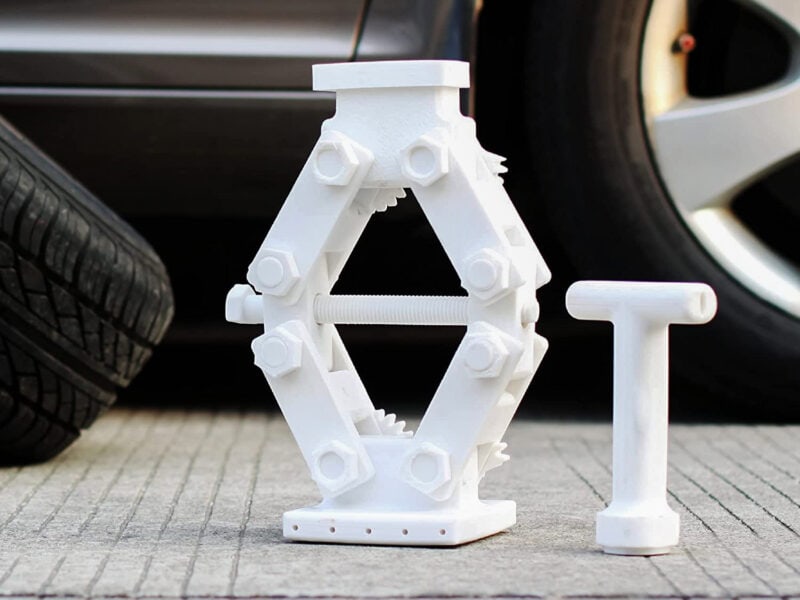
The Polymax Polycarbonate filament is one of the four materials in the Polymax series and is amongst the best Polycarbonate filaments available today.
It’s developed using Polymaker’s Nano-reinforcement technology that enhances the toughness, impact strength, and surface quality of your 3D printed parts. Polymaker attests that their Tough PC filament can withstand loads well beyond 110 ˚C, significantly higher than PLA or ABS materials.
There are multiple variations of the Tough PC filament, such as Flame-retardant PC, PC-ABS, and PC-Polybutane, developed for specific applications. These filaments are useful for special purposes where plain Polycarbonate filament simply doesn’t cut it.
For basic hobby 3D prints, the Polymax Tough PC is overkill. But if you’re considering using it for printing functional and load-bearing parts, we think it’s one of the best materials you can get for your 3D printing needs.
| Polymaker Polymax Tough Polycarbonate | |
|---|---|
| Colors | White, Black |
| Nozzle Temperature | 250 – 270°C |
| Print Speeds | 30 – 50mm/s |
| Bed Temperature | 90 – 105°C |
| Recommended Bed Surface | Magigoo PC, BuildTak® |
| Filament diameters | 1.75, 2.85 mm |
| Price | Check latest |
3DXTech ezPC Polycarbonate

The 3DXTech ezPC Polycarbonate is developed for end-use parts that demand excellent toughness and high heat resistance.
It does not release toxic fumes or odor, making it suitable for printing in any home environment. 3DXTech claims you can print the material without any enclosure; however, it does not give ideal results. With an enclosure, there’s significantly less warping of the parts ensuring higher print quality and success rates.
The main drawback, though, is that the ezPC filament needs more fine-tuning than other Polycarbonate filaments to narrow down print settings for a perfect 3D print. This can be time-consuming and challenging for first-time users.
Overall, ezPC Polycarbonate is a great 3D printing material that produces parts with top-notch mechanical characteristics without compromising print quality. It suits well for engineering and professional applications where the quality and performance of the parts are the highest priority.
| 3DXTech ezPC Polycarbonate | |
|---|---|
| Colors | White, Black, Dark Grey, Red |
| Nozzle Temperature | 255-275 °C |
| Print Speeds | 40-60 mm/s |
| Bed Temperature | 90-110 °C |
| Recommended Bed Surface | Magigoo PC |
| Filament Diameters | 1.75, 2.85 mm |
| Price | Check latest |
Priline Carbon Fiber Polycarbonate
Priline CF-PC filament combines the benefits of carbon fiber and Polycarbonate in a single strand, resulting in an excellent balance of hardness and toughness.
Priline has used actual carbon fibers (20%). Not only do they improve the material’s characteristics, but they are also visible and give your Polycarbonate parts a more professional appearance.
The main caveat is that carbon fiber is an abrasive material that quickly chews through your brass nozzles. You’ll need to use hardened steel nozzles to maintain print accuracy and quality. This Polycarbonate Carbon Fiber blend sometimes needs fine-tuning of print settings to achieve optimal print quality. It helps to have prior experience with composite 3D printing filaments.
Otherwise, the Priline CF-PC material is a solid filament and one of the most premium Polycarbonate blends that you can use to print functional end parts and in applications where maintaining temperature resistance and strength is crucial.
| Priline Carbon Fiber Polycarbonate | |
|---|---|
| Colors | Black |
| Nozzle Temperature | 240 – 260 °C |
| Print Speeds | 40 – 60mm/s |
| Bed Temperature | 80 – 110°C |
| Recommended Bed Surface | Magigoo PC |
| Filament Diameters | 1.75 mm |
| Price | Check latest |
Can Any 3D Printer Print Polycarbonate?
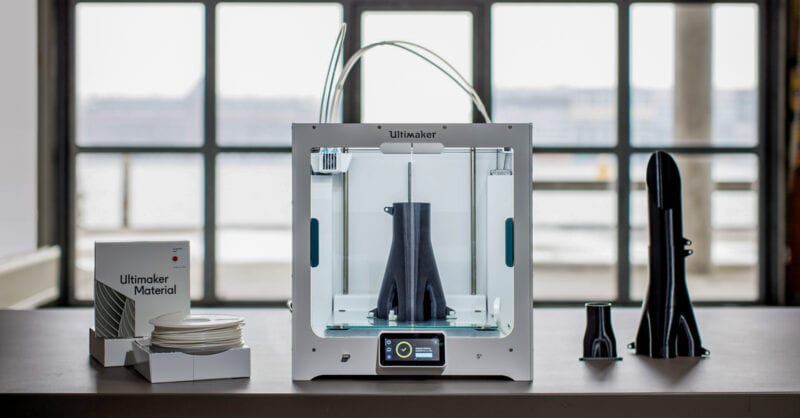
Not every 3D printer can print Polycarbonate filament. It is a challenging material to 3D print. You need a printer with a specific set of components that allow you to print Polycarbonate without warping or delamination.
For instance, the melting point of Polycarbonate (260-310 °C) is above the limits of PTFE-lined hot ends. You need a 3D printer with an all-metal hot end capable of reaching such high temperatures and sustaining them for a prolonged duration.
Similarly, even most 3D printers under $1000 are not designed to reach print bed temperatures above 110 °C, which is essential for printing Polycarbonate.
Several other factors, such as an enclosure and (ideally) an actively heated print chamber, are good to have in a 3D printer for printing Polycarbonate filament.
Polycarbonate Filament Storage Recommendations
You can use various options to store Polycarbonate filament. For example, large Ziploc bags with a pouch of Silica gel inside. An off-the-shelf solution is filament vacuum bags. They are a handy, quick, and cheap method to ensure your roll of Polycarbonate material stays dry and doesn’t absorb as much moisture from the air.
If you’re looking to store multiple rolls of PC filament, something like the FilaDryer S4 can be a good solution. It can store up to four 1kg spools in a heated box. You can print directly from the device, making it a multi-purpose filament storage solution.
Whichever method you choose, make sure to avoid exposing your Polycarbonate filament to the open air. You’ll end up with moist or ‘wet’ filament relatively quickly and you’ll need to dry the filament before you can print with it again without quality loss. If you have nothing else, a plain airtight container is better than nothing.
Is PC Filament Toxic To Print?
At the moment, there’s no definitive study that sheds sufficient light on the toxicity of Polycarbonate filament in 3D printing. As a result, the answer to this question is shadowed by doubts.
Some blends of Polycarbonate filaments use Bisphenol A (BPA) as a component. BPA helps lend Polycarbonate the flexibility and strength characteristics that the material is known for.
However, studies have shown that BPA interferes with our hormonal system and causes issues with the endocrine glands. For example, one study on Polycarbonate drinking bottles demonstrated an increase in BPA concentration in the urine system within a week of using these bottles.
While these studies cannot be directly linked to Polycarbonate filament used in 3D printing, it’s always best to err on the side of caution. Therefore, if you’re considering printing with PC material, don’t use it for food-related items. Using a 3D printer with a HEPA filtration system is also useful to minimize the side effects of any harmful fumes.
Is Polycarbonate Filament Strong?

Polycarbonate 3D printing filament is substantially stronger than common printing materials like PLA, ABS, and PETG. However, filament materials like ULTEM, PEEK, and Polypropylene are stronger than PC.
You can refer to the studies and experiments mentioned above in the article for more details on the strength of Polycarbonate filament. These studies provide great insight into the material and help you determine if PC filament is the right choice for your projects.
Conclusion: Should You Use Polycarbonate 3D Printing Filament?
Polycarbonate might be a challenging material to 3D print. But, once you master it, the benefits it provides far outweigh the drawbacks. Its heat-resistant properties, high impact resistance, and tensile strength are useful for many projects. For 3D printing objects with high optical clarity, it’s difficult to find a better filament as well.
To get the best results when Polycarbonate 3D printing, you’ll need to use an all-metal hot end, high bed temperature (typically 100°C or higher, depending on the brand), and an enclosure. Lower temperatures, whether the printing or bed temperatures or the air temperature, are best avoided.
You might also want to look into a 3D printer with a ventilated system. Polycarbonate filament is capable of giving off fumes that aren’t suitable for human health.
We believe this guide has helped you become more familiar with Polycarbonate filament as a 3D printing material and gain a better understanding of its usefulness in your applications. If you feel there’s anything else you’d like to learn about PC material feel free to comment below.
Till then, happy 3D printing!
